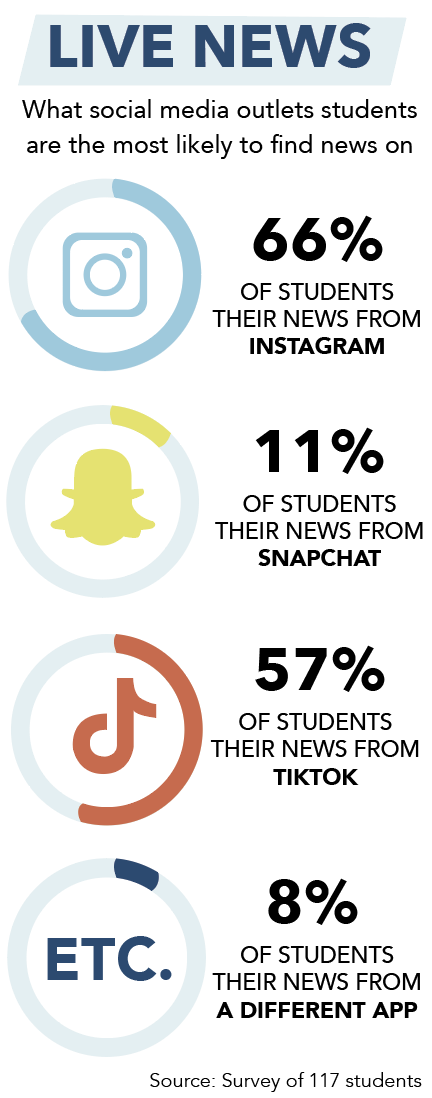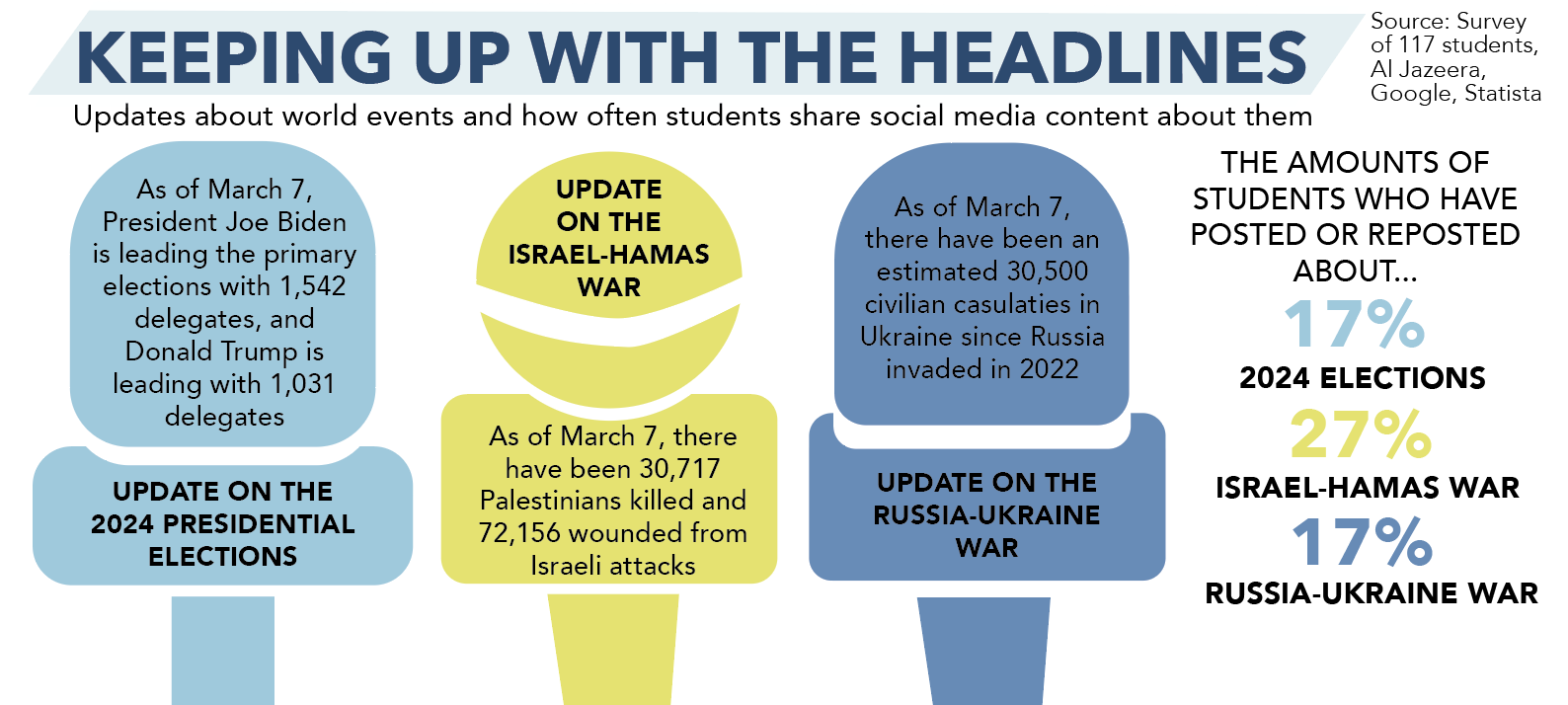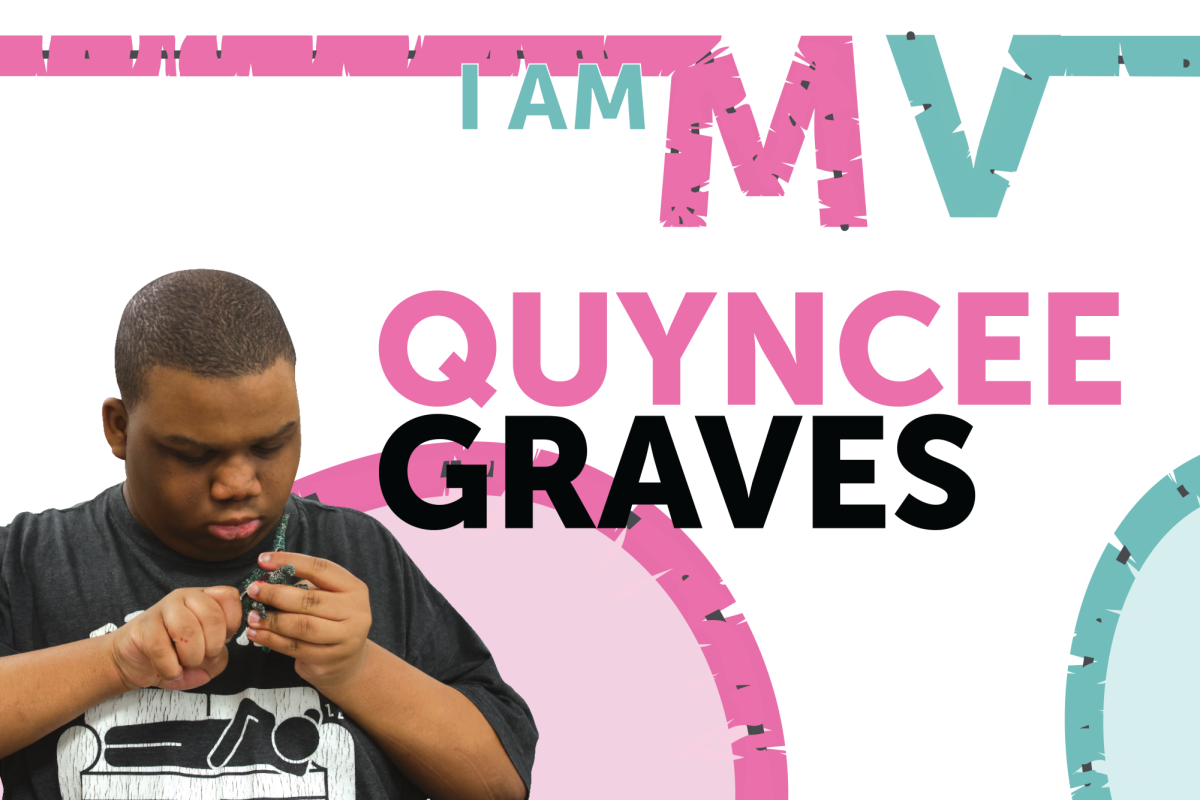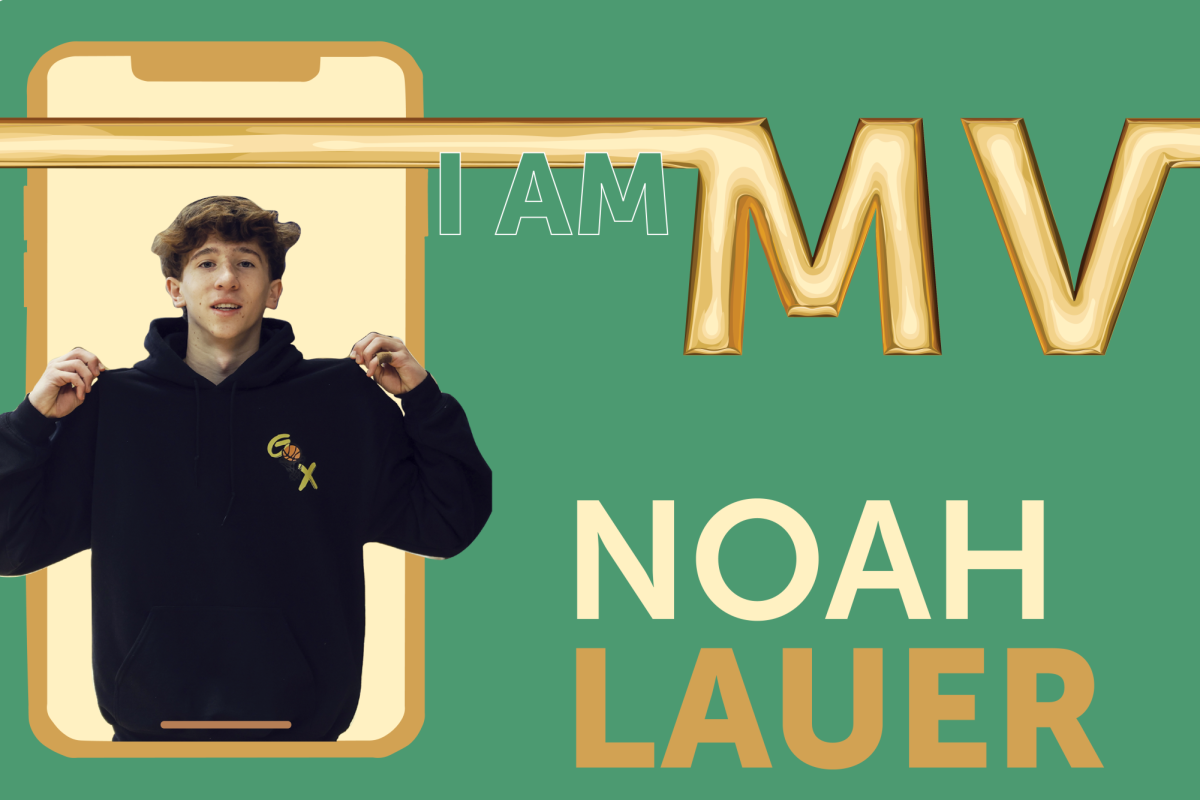
News Nuance
When major events like the shooting at the Chiefs victory celebration or developments in the war in Gaza happen, it is natural to want to get all the information when it happens. However, from 1605 to 1940, a person would have had to wait for tomorrow’s newspaper to learn about what was happening. Then in 1940, the first television news station was created making these updates available nightly on NBC. Now, however, the information that people so desperately seek is available right in front of them, plastered all over social media pages from national news sources to influencers to everyday people. The key difference is that, unlike the news updates that older generations had to wait for, this social media news is not necessarily reliable or true. Even though many students know this, they still use apps like Instagram and TikTok as news sources because they are so easily accessible. With algorithms that push the content the user likes and sharing functions to quickly communicate opinions, social media allows users to see exactly the content, including news content, that they want to see when they want to see it. This highly accessible yet potentially unreliable information can be both wonderful and dangerous in a world where people want to get news updates faster than ever.
Convenient Content
Because students become accustomed to getting information fast via social media, most teens don’t wait to watch the nightly news from an established source to learn about current events.
In fact, according to a JagWire survey, 89% of students said they found social media news to be reliable enough. This reflects a national trend, reported by the Pew Research Center, which said that adults between the ages of 18 and 30 only trust social media news content 6% less than news received via national news organizations. Junior Matt Tieman believes this is because the sources they follow are viewed as trustworthy.

“I tend to believe what I see just because I don’t really follow untrustworthy sources,” Tieman said. “Whether it’s on the left or right side, that doesn’t really impact me. I just like to know what’s going on and I feel like I can trust the sources that I have.”
Sophomore Tanav Sood explained that having quick access to trusted sources through social media gives students an easy way to stay up to date on global events.
“It gives them an awareness of what’s going on in the world,” Sood said. “Teenagers are on their phones a lot and there’s a lot of negatives associated with social media, but there’s also positives like staying up to date on news.”
Much of what makes news on social media so appealing to young people is that they already spend time there, making it convenient and easy to access, according to the Pew Research Center. Senior Jules Tracy believes this is a large part of what makes social media a useful source of news.

“It helps people learn their news in a way that they actually want to and have the desire to, on a platform they already enjoy,” Tracy said.
Kansas Student Press Association executive director and KU School of Journalism lecturer Eric Thomas agreed with Tracy, saying that students get news from social media because of its addictive nature.
“[Social media is] literally designed to be addictive and effective in building habits for us,” Thomas said. “The fact that students are spending time on that medium means that that’s the way that they’re most often going to get their news.”
This is not inherently a bad thing, though. Senior Meron Abebe explains how social media can be a great starting point for learning about news that students might have never otherwise seen.
“There are also a lot of people who consume their news information from these social media apps,” Abebe said. “If someone isn’t aware of Israel and Palestine and they [see] someone reposting that, they probably are going to look more into it.”
Mixed Messages
Getting an introduction to a major news event on social media is certainly one positive of using them as a news source, but as Abebe said, the next step should be to look further into what is actually going on. This is a crucial step that many teens are missing due to their trust in social media sources and the apps’ addictive natures.
Tieman explained that though social media has great potential for spreading news content, news accounts on social media still have their drawbacks.

“I think, on social media, you really don’t get the entire story,” Tieman said. “I would like to go more in depth of what’s going on and I feel like you don’t really get the whole picture [on social media.]”
Furthermore, not all of the news found on social media is accurate. Whether it be biased wording, exclusion of details, or flat-out misrepresentation of the truth, social media can be a minefield for fake news. The Pew Research Center reported that four-in-ten Americans say inaccuracy is the thing they dislike most about getting news from social media. Tracy explained how simply seeing misrepresented news can affect students’ opinions.
“If you see it from one site in particular, and they’re reporting on one side, I feel like it’s easier to be swayed into the direction that they’re biased,” Tracy said.
This swaying effect is in part a result of the algorithms present on many social media platforms. The Proceedings of the National Academy of Sciences (PNAS), a peer reviewed journal of the National Academy of Sciences, said in a research article that algorithms “limit our selection process by suggesting contents similar to the ones we are usually exposed to.” As a result, users may develop a one-sided perspective, according to Abebe.
“If you’re constantly consuming heavily, like left-wing content, that’s what your For You page is going to be,” Abebe said. “It’s going to be heavily that one-sided view and you’re not going to understand the other side or what other people might be thinking and then it leads to just a one-sided view on an issue.”
Social studies teacher Jason Pendleton said that while there are plenty of different sources on social media, they aren’t always reliable and trusting the first thing you see isn’t the right way to go about consuming news.
“Unfortunately, trusting Steve from Indiana with your news may not be the best option you want to choose,” Pendleton said. “You want to go to journalists who have to follow high standards to report on things as opposed to somebody hearing a rumor and passing it on.”
Passing on content is common on social media through functions like reposting or tagging a friend in the comment section. This can present another issue with social media in that users are likely going to see content their friends agree with, and never take the time to form their own opinion.
“If you have a lot of friends that are heavily left wing or right wing, you’re probably going to see that your friend liked this or your friend reposted it, [then when you] check out the video, you’re probably going to have more views on that [side],” Abebe said.
One way to avoid this is going straight to the source to get the most reliable content, but this can be difficult to do on social media. Thomas explained that social media causes uncertainty about where information is coming from, making it hard to determine whether or not that information is trustworthy.
“It’s a lot more complicated than it used to be,” Thomas said. “The news used to hit your front porch and you picked it up and you felt like ‘Well, I pay money to subscribe to this newspaper, so everything in here I’m going to trust,’ but when you open up an Instagram app, you don’t know who created the message that’s in front of you even when you think you do.”
Filtering the Fake
Because of this confusion with regards to where information comes from and whether or not it is trustworthy, students should be vary of the news they receive on social media apps.

Many social media apps have programs that are designed to combat the spreading of misinformation. For example, according to Instagram’s policy, they “use both technology and feedback from [the] community to identify posts and accounts that may contain false information.” However, much of the false information still falls through these programs. In Tracy’s opinion, social media apps need to be able to prevent misinformation before it reaches any people.
“I know Instagram does a fake news [feature] where you can get it reported, but I feel like they need to be filtering more of those to make sure that things aren’t inaccurate when it’s first posted,” Tracy said.
According to a study done by Ohio State University, one of the reasons determining the authenticity of news is difficult is that many social media sites present content in the same way, no matter the source. Because of this, it is also more important than ever for students to put in the time to fact-check content that they see. It is social media users’ own responsibility to be able to assess the information and then react accordingly, Pendleton said.

“It’s just more of a responsibility for us, as human beings, to evaluate the quality of what we’re seeing, is it real or is it not,” Pendleton said. “It’s become even more difficult to figure out if stories that we’re being exposed to are real or not, and I think as humans, that’s our responsibility to not react immediately to information but to take a deep breath. Try to get as much information as we can from it, and then use that information to move forward.”
Even when taking as much information as possible from a source doesn’t yield the knowledge students want, it is important to prioritize quality information over any information, according to Thomas.
“[After the shooting at the Chiefs celebration,] I was constantly rechecking the feeds of trusted news sources and when I couldn’t get answers, I was frustrated,” Thomas said. “But I think the thing that made me feel a little bit better is that I didn’t try to go to garbage sources to find the answers to that.”

Ultimately, though they can be harder to spot on social media, biased and inaccurate sources can be found anywhere. For Abebe, checking the facts of the story and being open to opinions from both sides gives the best possible understanding.
“I think no matter what [sources you use] it’s vital that you look at both sides, even if you think one argument is stupid,” Abebe said. “At the end of the day, you need to be open minded and aware that other people are always going to have different opinions and you need to be ready to understand how to take those in.”












